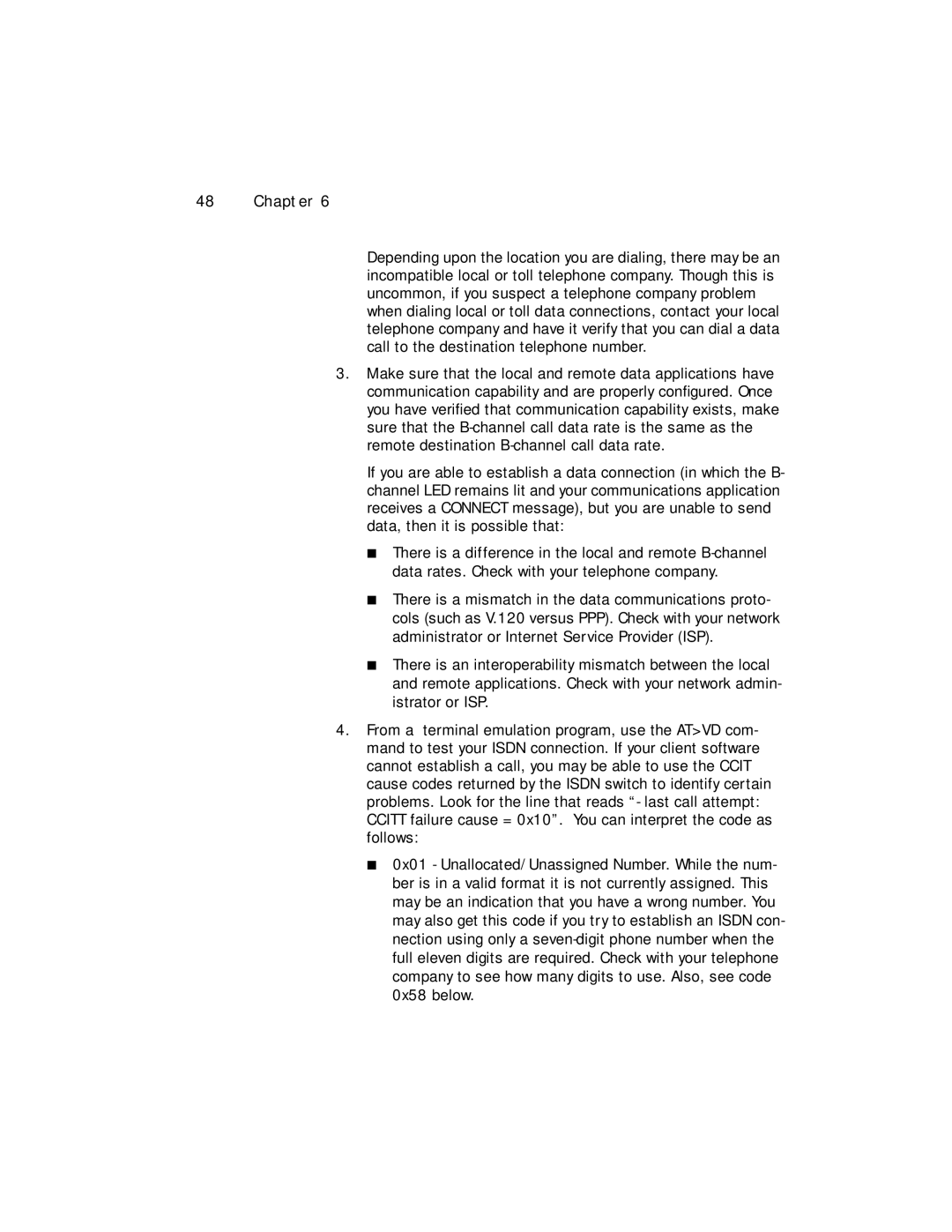48 CHAPTER 6
Depending upon the location you are dialing, there may be an incompatible local or toll telephone company. Though this is uncommon, if you suspect a telephone company problem when dialing local or toll data connections, contact your local telephone company and have it verify that you can dial a data call to the destination telephone number.
3.Make sure that the local and remote data applications have communication capability and are properly configured. Once you have verified that communication capability exists, make sure that the
If you are able to establish a data connection (in which the B- channel LED remains lit and your communications application receives a CONNECT message), but you are unable to send data, then it is possible that:
■There is a difference in the local and remote
■There is a mismatch in the data communications proto- cols (such as V.120 versus PPP). Check with your network administrator or Internet Service Provider (ISP).
■There is an interoperability mismatch between the local and remote applications. Check with your network admin- istrator or ISP.
4.From a terminal emulation program, use the AT>VD com- mand to test your ISDN connection. If your client software cannot establish a call, you may be able to use the CCIT cause codes returned by the ISDN switch to identify certain problems. Look for the line that reads “- last call attempt: CCITT failure cause = 0x10”. You can interpret the code as follows:
■0x01 - Unallocated/Unassigned Number. While the num- ber is in a valid format it is not currently assigned. This may be an indication that you have a wrong number. You may also get this code if you try to establish an ISDN con- nection using only a
